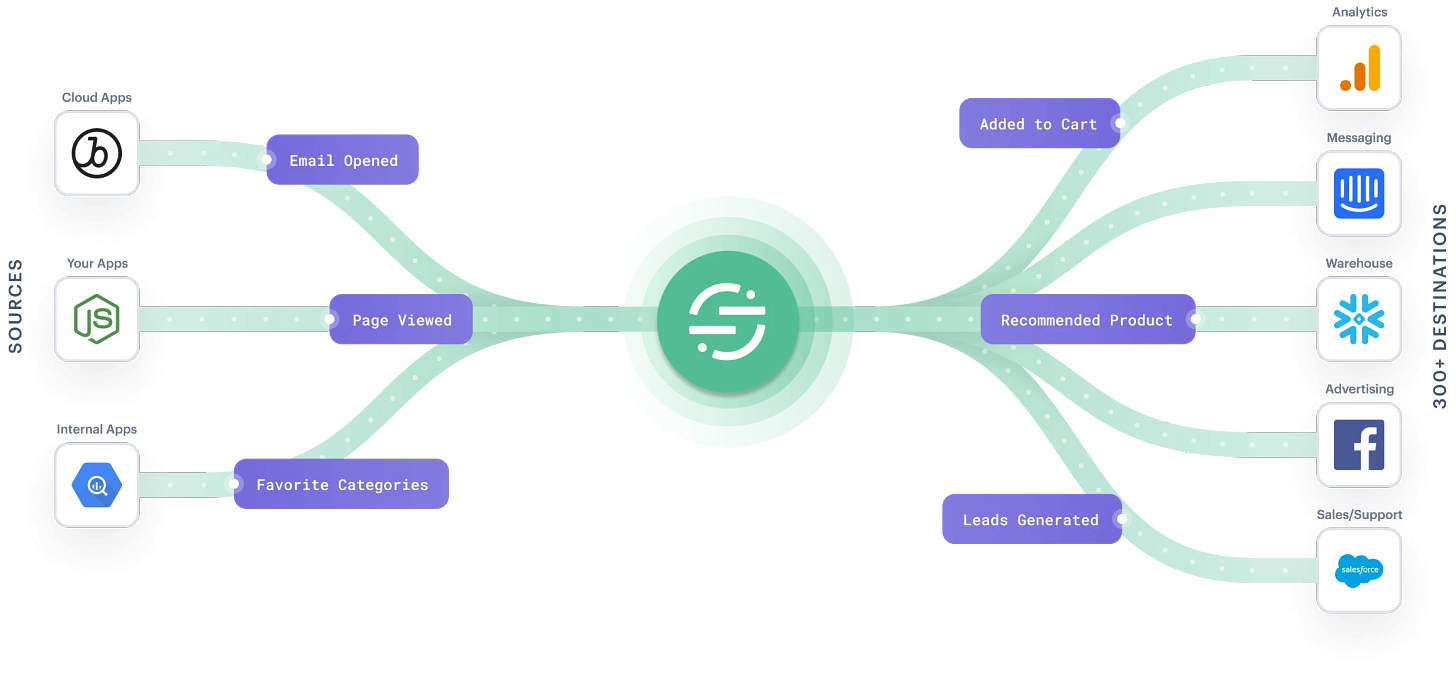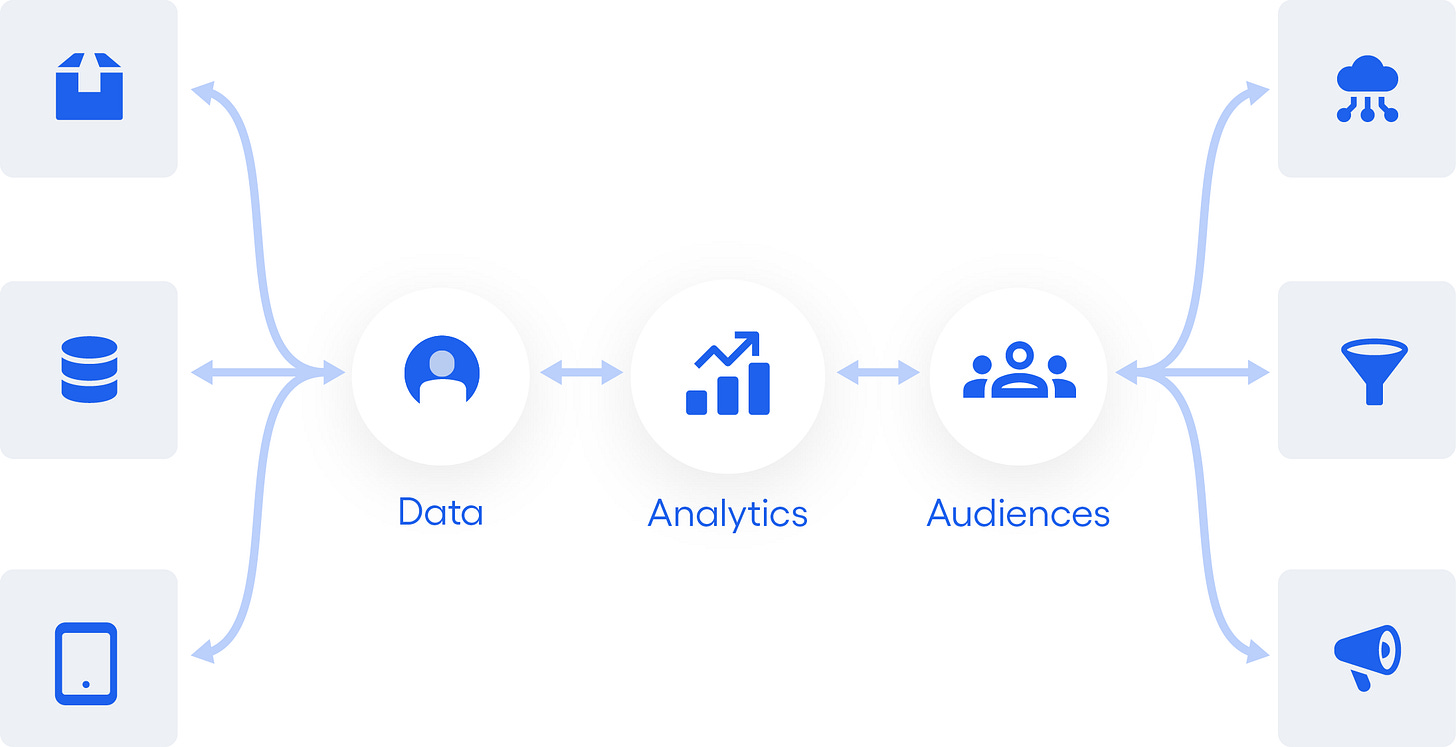A typical question I’m asked at work:
“What is Segment? How is it different from Amplitude?”
They’re both Customer Data Platforms (CDPs) but cater to different needs and objectives.
A Customer Data Platform (CDP) is a software solution that functions as a centralized repository for all your customer data.
It gathers information about your customers from various sources, including your website, email marketing platform, sales software, and more. The CDP cleans and deduplicates this data, merging everything into a single, unified profile for each customer.
This unified profile provides significant value for businesses. It grants you a comprehensive view of the customer journey, from their initial brand interaction to their most recent purchase.
Coming back to Segment vs Amplitude.
Segment is a CDP focused on data collection and integration. It acts as a bridge, pulling data from all your marketing and customer data sources into a central location for easy access by other tools.
Amplitude, on the other hand is more analytics-focused.
It excels at helping you understand how customers interact with your product or service. Amplitude uses the data in your CDP to track user journeys, identify bottlenecks, and optimize your product for better engagement
Here's a short analogy:
Imagine Segment as a data librarian. It meticulously gathers and organizes customer information from various sources.
Amplitude, on the other hand, is the data researcher. It analyzes the organized data to uncover insights into customer behavior.
Segment and Amplitude, working in tandem bridge the gap between data infrastructure and user journey analysis.
Segment acts as the data collection and routing hub, ensuring a clean and consistent flow of information about user behavior - Amplitude then utilizes this data to analyze user journeys within your product.
Now Amplitude also has a growing CDP functionality similar to Segment, but Segment’s user-friendly interface is quick to pick up even for non-technical users hence it is preferred more for data collection.
But Segment has a limited analytics capability -it itself doesn't offer extensive built-in analytics functionalities. You'll need to integrate it with separate analytics tools for in-depth data exploration - which is here Amplitude kicks in.
Amplitude offers powerful features such as user journey visualization, funnels, and cohort analysis to understand how users interact with your product and identify areas for improvement.
So, When to Choose Which?
Choose Segment when: You need a flexible data pipeline to manage data from multiple sources and integrate with various tools. Your primary focus is centralizing user data and don't require extensive built-in analytics.
Choose Amplitude when: Your main focus is product analytics and understanding user behavior within your product. You need powerful features for analyzing user journeys, funnels, and user cohorts.
Tue magic unfolds when Segment and Amplitude come together. Segment acts as the data collection and routing infrastructure, ensuring a clean and consistent flow of information.
Amplitude, then, utilizes this data to unveil the hidden melodies within the user journey symphony. Data collected by Segment from various sources can be seamlessly integrated with Amplitude, enriching your product analysis with a more nuanced understanding of your users.
Hope this gave you a quick overview about these CDPs.
Keep your paws warm!




